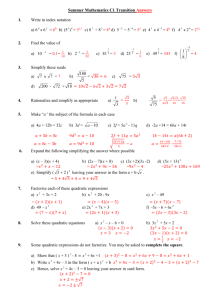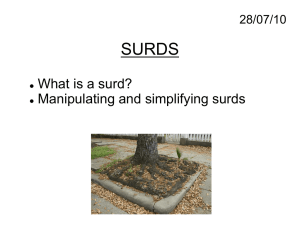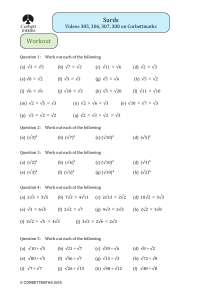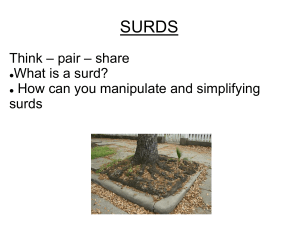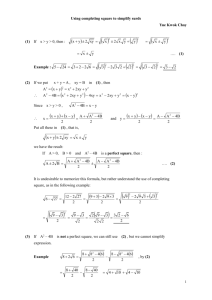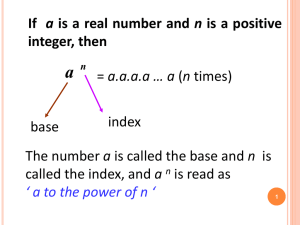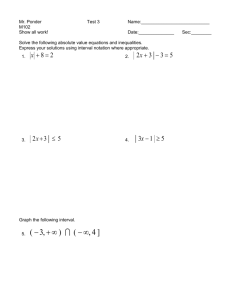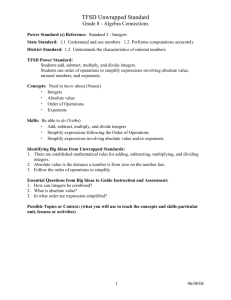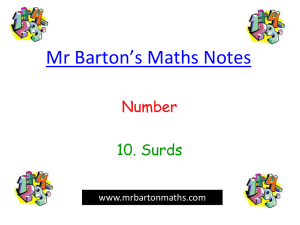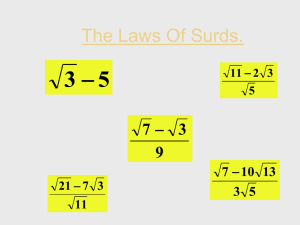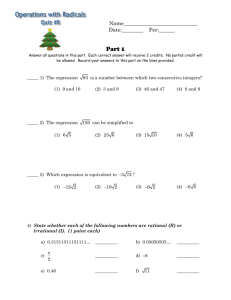Lesson 6 - Simplifying Surds
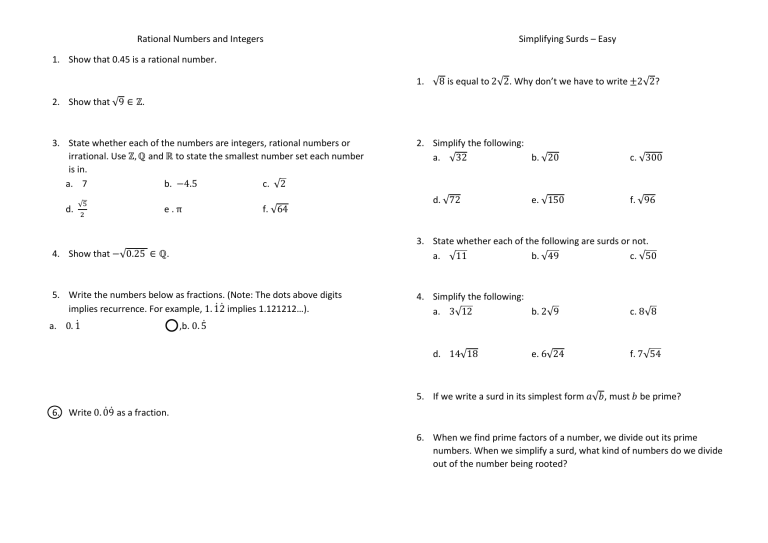
Rational Numbers and Integers
1.
Show that 0.45 is a rational number.
2.
Show that √9 ∈ ℤ .
3.
State whether each of the numbers are integers, rational numbers or irrational. Use ℤ, ℚ and ℝ to state the smallest number set each number is in. a.
7 b. −4.5
c. √2 d.
√5
2 e .
4.
Show that −√0.25 ∈ ℚ .
π f. √64
5.
Write the numbers below as fractions. (Note: The dots above digits implies recurrence. For example, 1. 1̇2̇ implies 1.121212…). a.
0. 1̇
○
,b. 0. 5̇
6.
Write 0. 0̇9̇ as a fraction.
Simplifying Surds – Easy
1.
√8 is equal to 2√2 . Why don’t we have to write ±2√2 ?
2.
Simplify the following: a.
√32 b. √20 c. √300 d. √72 e. √150 f. √96
3.
State whether each of the following are surds or not. a.
√11 b. √49 c. √50
4.
Simplify the following: a.
3√12 b. 2√9 c. 8√8 d.
14√18 e. 6√24 f. 7√54
5.
If we write a surd in its simplest form 𝑎√𝑏 , must 𝑏 be prime?
6.
When we find prime factors of a number, we divide out its prime numbers. When we simplify a surd, what kind of numbers do we divide out of the number being rooted?
Simplifying Surds – Hard
1.
Prove that √16 is not a surd. (Saying √𝟏𝟔 = ±𝟒 is not enough! Think about number sets and rules! Explain your process!)
2.
Simplify the following: a.
√192 b. √372 c. √484 d. √810
○
,e. √1728
○
,f. √1445
3.
If an expression 𝑎√𝑏 is not a surd where 𝑎 and 𝑏 are integers, write down the number set that 𝑎√𝑏 must be in. As usual, please write down the smallest number set it is contained in.
4.
Simplify the following: a.
5√60 b. 2√98
○
,c. 3√507
5.
For each of the roots, draw a prime factor tree and write the number inside the root as a product as its prime factors. Hence, simplify it. a.
√92 b. √288 c. √1875
